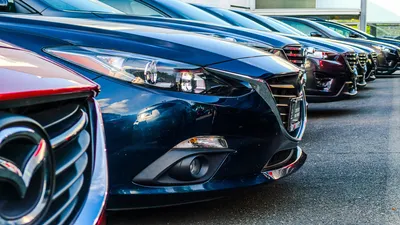In today’s world, vehicle security is a priority not only for law enforcement but also for everyday vehicle owners. One major step taken by India to enhance road safety and curb vehicle-related fraud is the implementation of the High Security Registration Plate (HSRP) system. Whether you’re a new car owner or simply interested in knowing more about how this identification system works, this comprehensive guide dives into the evolution, features, and benefits of HSRP in 2024.
What Is the High Security Registration Plate (HSRP)?
The High Security Registration Plate is more than just a number – it represents an advanced system designed to improve the identification of vehicles. Unlike conventional plates that can be easily tampered with, HSRP comes with a host of security features that make it extremely difficult to forge or alter. Initially introduced as a measure to deter vehicle theft, license plate cloning, and other crimes, the HSRP has now become a mandatory requirement for all new vehicles across several states in India.
HSRP is equipped with a laser-etched permanent imprint of the registration number on the plate. This is further enhanced by reflective sheeting and other anti-fraud technologies that ensure authenticity. These measures are instrumental in reducing the risk of identity theft associated with cloned or fake license plates.
The Evolution of Vehicle Registration in India
The concept of vehicle registration in India was first introduced to maintain an organized system of tracking vehicles across states. However, traditional registration plates had their limitations, often being subjected to tampering and forgery. As India experienced rapid growth in the automotive sector, challenges such as plate cloning and fuel evasion became increasingly common.
In response to these challenges, the government decided to upgrade to a more secure system. The HSRP was developed as a part of this initiative, combining technology with regulatory measures to create a robust and tamper-proof system. Over the years, as the technology matured, several updates and inspections have ensured that the HSRP system remains at the cutting edge of vehicle security.
Key Features of HSRP
The HSRP is distinct due to its modern and integrated security features. Let’s explore what sets it apart from traditional registration plates:
1. Laser-Etched Registration Number
One of the primary components of the HSRP is the laser-etched imprint of the vehicle’s registration number on the plate. This permanent marking is resistant to fading, wear, or deliberate tampering, thereby ensuring its long-term integrity across the lifespan of the vehicle.
2. Reflective Sheeting
For enhanced visibility and safety, HSRP uses reflective sheeting that significantly improves the legibility of the registration plate at night or in low-light conditions. This feature not only aids traffic enforcement but also enhances road safety by making vehicles more visible.
3. Non-Removable Stickers
In addition to the prominently displayed registration number, HSRP includes non-removable hologram stickers. These stickers add an extra security layer by making it extremely difficult to swap or duplicate a plate without detection.
4. Standardized Design and Color Coding
The standardized design of HSRP, including colors and fonts, facilitates easy recognition by law enforcement officials across different regions. This uniform look not only strengthens the legal framework but also helps in quick identification during routine checks and enforcement activities.
5. Tamper-Resistant Materials
Manufactured using high-durability materials, HSRP is designed to withstand various environmental conditions and potential vandalism. The robustness of the plate plays a crucial role in preventing unauthorized modifications and replacements.
The Process of Getting HSRP
Transitioning from a standard metal plate to an HSRP may seem technical, but the process is streamlined to ensure a smooth experience for vehicle owners. Here’s a step-by-step breakdown of what to expect:
Step 1: Application Submission
For any new vehicle purchase or when renewing registration, vehicle owners need to apply for an HSRP at authorized centers. The application requires standard documents such as proof of identity, address proof, and the vehicle registration certificate.
Step 2: Inspection and Verification
After the application is submitted, a trained official undertakes a detailed inspection of the vehicle. This step involves verifying the registration details, checking for any previous tampering, and confirming that all required documents are in order. The objective is to maintain strict compliance with the anti-fraud measures set by the authority.
Step 3: Payment and Scheduling
Once the application and inspection are successful, users will be asked to make the requisite payment. The fee structure is standardized across most states, although minor variations can exist. Following payment, a convenient time slot is scheduled for the installation of the HSRP.
Step 4: Plate Installation
At the scheduled appointment, the HSRP is affixed to the vehicle. This installation is carried out by certified technicians, ensuring that all safety and regulatory protocols are observed. The technician also verifies that the laser etching and stickers are properly applied, confirming the authenticity of the plate.
Step 5: Final Verification and Documentation
After the HSRP is installed, the vehicle undergoes a final round of verification. This process ensures that the plate adheres to both design and security standards. The vehicle owner receives an updated registration certificate reflecting the installation of the HSRP.
Advantages of HSRP
The introduction and widespread adoption of HSRP have brought about numerous benefits across the automotive landscape in India. Here are some of the most significant advantages:
Enhanced Security and Crime Prevention
The tamper-proof nature of HSRP makes it extremely difficult for criminals to forge or modify license plates. This reduces incidents of vehicle theft, plate cloning, and other forms of automotive fraud. With a laser-etched number and secure hologram stickers, law enforcement has a much easier time tracking down counterfeit plates.
Improved Traffic Management
For traffic police and regulatory agencies, standardized HSRP design simplifies vehicle identification. In cases of roadside checks or toll verification, the clear and uniform design of these plates aids in quicker processing. This efficiency not only speeds up traffic management but also enhances overall road safety.
Elevated Buyer Confidence
Car buyers and sellers have more confidence knowing that every vehicle is registered under a robust identification system. The HSRP adds an extra layer of trust, making it easier for both parties to verify the authenticity of a vehicle’s history before finalizing any transactions.
Reduced Fraud in Insurance Claims
Vehicle insurance fraud, particularly related to stolen or cloned vehicles, has long been a menace. With HSRP, the likelihood of such fraud decreases considerably because the registration plate has features that make altering its identity nearly impossible. This translates into lower insurance premiums and fewer disputes.
Streamlined Vehicle Management for Authorities
From automated toll systems to integrated vehicle tracking, the HSRP plays a key role in modern traffic management systems. The use of reflective and tamper-resistant plates assists multiple governmental departments in maintaining accurate and reliable vehicle records. In many regions, linking HSRP data with digital enforcement tools has already proven to reduce errors and improve efficiency.
Challenges and Future Improvements
While the HSRP system has clearly revolutionized vehicle security, there have been some challenges along the way. The initial rollout involved logistical hurdles such as long queues and delays in installation. However, with continuous improvements in infrastructure and the training of personnel, these issues are steadily being addressed.
Looking ahead, future advancements may include integrating smart technology into HSRP. Ideas like embedding RFID chips or QR codes could further tighten security and enable real-time tracking of vehicles. Such innovations would not only solidify the trustworthiness of the system but also open new avenues for automotive innovation in the public sector.
Real-World Impact and Testimonials
Behind every security measure lies a story. Many vehicle owners have shared their positive experiences regarding the HSRP implementation. Consider the situation of Rajesh, a fleet owner who remarked on the ease with which his vehicles are now tracked and verified during roadside checks. Similarly, automobile dealers have noted a significant decrease in disputes over ownership thanks to clear and standardized high-security plates. These testimonials underscore how HSRP not only aids enforcement agencies but also benefits everyday users.
Advice for Vehicle Owners
If you’re new to the HSRP system or looking to update an existing vehicle, here are a few tips to ensure a smooth experience:
- Keep Documents Ready: Ensure that all necessary documents—such as proof of registration, identity, and address—are accessible before applying.
- Visit Authorized Centers: Always choose authorized HSRP application centers to avoid counterfeit services.
- Double-Check the Application: Review your application details carefully to avoid delays due to errors or omissions.
- Maintain Your Plate: Once the HSRP is installed, take good care of it. In case of any damages or tampering, contact the authorities immediately to have it reissued.
- Stay Updated: Regularly check government notifications or official websites to stay informed about any changes in fees, process improvements, or technological upgrades related to HSRP.
The Road Ahead: Embracing Digital Integration
The shift towards digitalization in the automotive sector is unrelenting. Innovations such as automated license plate recognition (ALPR) systems are already in testing phases in several cities. By integrating HSRP data with digital platforms, law enforcement agencies can further reduce crime and streamline vehicle management. For vehicle owners, this means even safer roads and more efficient resolution of traffic-related issues.
As India continues its journey towards a smart and digitally connected future, the HSRP remains a cornerstone of vehicle security. In 2024, the combination of modern technology and strict regulatory oversight has created a system that not only deters crime but also enhances the overall driving experience.
In Conclusion
The High Security Registration Plate (HSRP) is far more than just a piece of metal on your vehicle—it is a sophisticated tool crafted to safeguard your vehicle's identity and secure your investment. By combining advanced security features, a standardized approach, and continuous innovation, the HSRP system has set a benchmark in automotive safety in India.
If you’re a vehicle owner, understanding the ins and outs of HSRP is crucial. From the moment you apply for your plate to the final installation, every step is designed with your security and convenience in mind. Let the HSRP be a reminder of how modern technology can enhance even the simplest aspects of daily life.
So, whether you are tracking your vehicle’s history, filing an insurance claim, or simply driving down the highway, know that the HSRP is there to help maintain order, boost credibility, and foster trust in India’s evolving automotive landscape.
Embrace this digital era with confidence and stay informed about future innovations that promise to make our roads safer and our driving experiences even more secure. Stay safe, secure, and ahead of the curve with the High Security Registration Plate system in 2024 and beyond.




.webp)

.webp)



.webp)
.webp)
.webp)
.png)